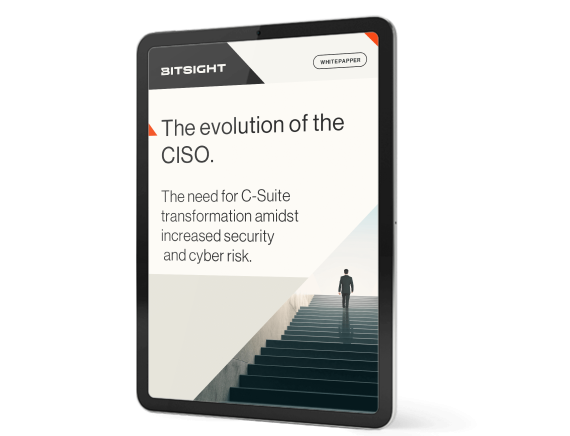In the midst of facilitating organization-wide digital transformation, the CISO also must undergo his or her own professional transformation to keep up with a world in serious need of cybersecurity leaders.

Cybersecurity is a priority for any organization and a big-ticket budget line item. But before investments in security are made, your organization must understand what it is doing right and where improvements to your cybersecurity program are needed.
Typically, this involves conducting a periodic cybersecurity audit. But these assessments only capture a point-in-time view of the effectiveness of your security controls – and are incredibly resource-intensive.
For year-round continuous assessment of the impact of your cybersecurity program, you need a different approach. Let’s take a look.
1. Measure and rate security performance – 24x7x365
To first understand the performance of your cybersecurity program, you need to measure it. Instead of waiting for your next scheduled security audit, a more effective way to assess cyber risk is to continuously monitor your IT infrastructure using a tool like Bitsight Security Ratings.
Security ratings are a data-driven measurement of your enterprise-wide security performance. Ratings allow you to assess risk and the likelihood of a breach based on risk factors such as unpatched systems, open ports, misconfigured software, malware infections, and weak security controls.
Findings are presented as a numerical score (like a credit score), making it easy to convey security risks and your organization’s cybersecurity readiness in terms that all stakeholders can understand.
With the context and visibility that security ratings provide, it becomes much easier to prioritize your limited resources to achieve the greatest performance impact.
2. Identify gaps in security controls – at a glance
As your digital ecosystem grows—on-premises, in the cloud, and across geographies, business units, and remote offices—new vulnerabilities can creep in.
Unfortunately, identifying these vulnerabilities requires manual effort, expertise, and careful analysis. Consequently, your view of your true security posture may be clouded, and risk can slip under the radar.
But with a tool like Controls Insights (part of Bitsight for Security Performance Management), you can automatically and continuously monitor the effectiveness of your security controls according to best practices frameworks.
You’ll get an at-a-glance view of the current and historic state of your organization’s security controls. If a vulnerability is identified, you can drill down into the root cause and get specifics on “the why” of a control’s state. Bitsight will also recommend a course of action in alignment with the appropriate CIS Controls and/or safeguards.
Think of it as a parallel data analysis tool that operates alongside Bitsight Security Ratings to help you proactively identify and remediate risk, monitor your team’s progress over time, and drive continuous improvement of your security posture.
3. Gain insight into which remediation actions make a difference
Your board and senior leadership team want to ensure your organization maintains a strong security posture. The challenge is deciding which adjustments to your cybersecurity program will deliver the fastest and most significant results. To present a clear and confident plan of action to business leaders, you need to weigh different strategies and outcomes.
With Bitsight Forecasting, you’ll get the insights you need to better inform strategy and resource allocation. You can model scenarios and create action plans that guide your organization down the path of continuous improvement. Bitsight also tracks your progress over time so you can determine the impact of program changes, update executives and the board, and ensure your organization hits its goals.
The Evolution of the CISO

The Evolution of the CISO
4. Benchmark your cybersecurity program against your peers
Other corporate functions must constantly evaluate key financial and operational metrics through performance benchmarking. So why not cybersecurity?
Part of the problem is that traditional cybersecurity tools don’t allow you to compare your organization’s security performance against industry averages and its peers. But with Bitsight Security Ratings for Benchmarking, you can assess how your cybersecurity program is performing compared to your peers, better understand what standards of care are appropriate within your industry, what security targets you should strive to achieve, and where current security practices and controls fall short.
With these insights, you can create improvement plans, prioritize risk-reduction strategies, and, if needed, advocate for increased security resources.
5. Monitor and assess third-party risk
Data breaches that originate with third parties and vendors are on the rise. To protect your organization against digital supply chain risk, you need to implement best practices that have the right impact on your process for managing third-party risk.
Manual assessments during vendor onboarding and auditing have their place, but, as your vendor pool grows, they place a heavy burden on security and risk management teams. Sharing updates and insights about your third-party risk management program to your board of directors also requires time-consuming data analysis and report generation.
But by implementing an automated, continuous monitoring solution, like Bitsight for Third-Party Risk Management, you can measure and verify the security posture of your vendors – without relying on manual, subjective assessments. Plus, you can more accurately discuss, report on, and make decisions about your vendor management program with senior leadership.
Unite teams around actions that have the most impact
With the comprehensive insights that Bitsight delivers, you can more effectively benchmark, measure, and monitor enterprise-wide and third-party security performance. Armed with these data-driven insights, it becomes much easier for your organization to reach alignment on where to invest your limited budget, time, and resources to achieve the greatest security performance impact.